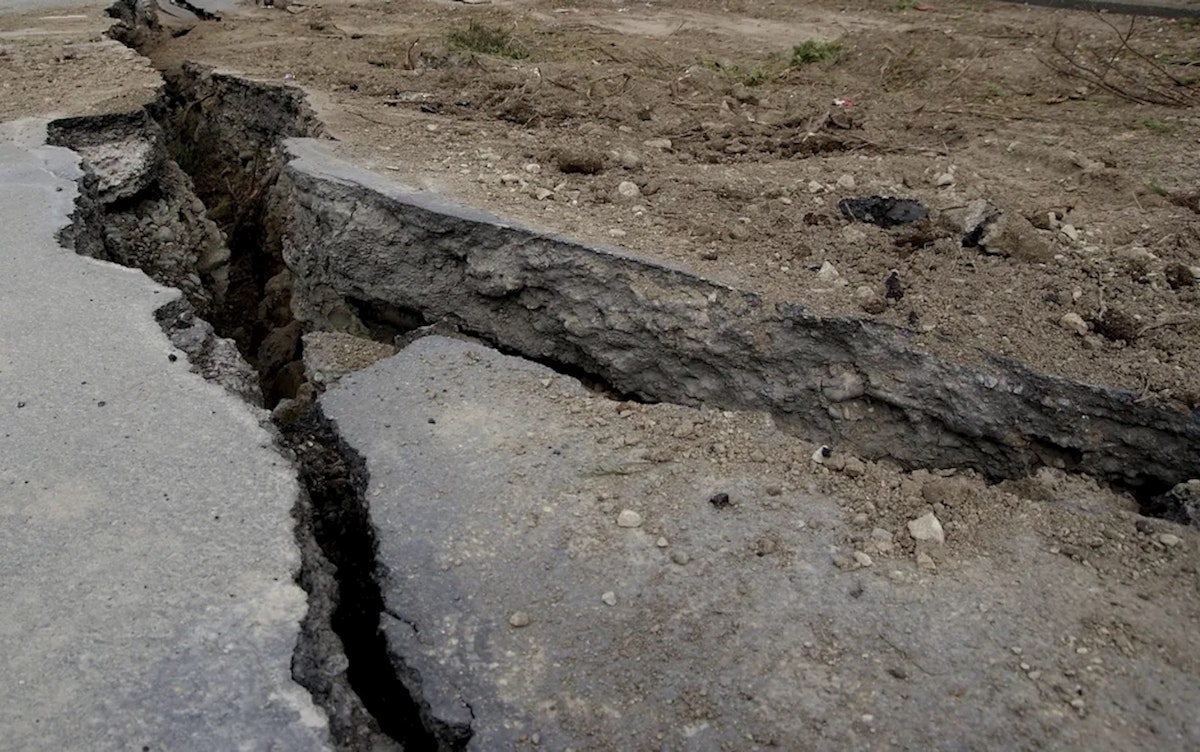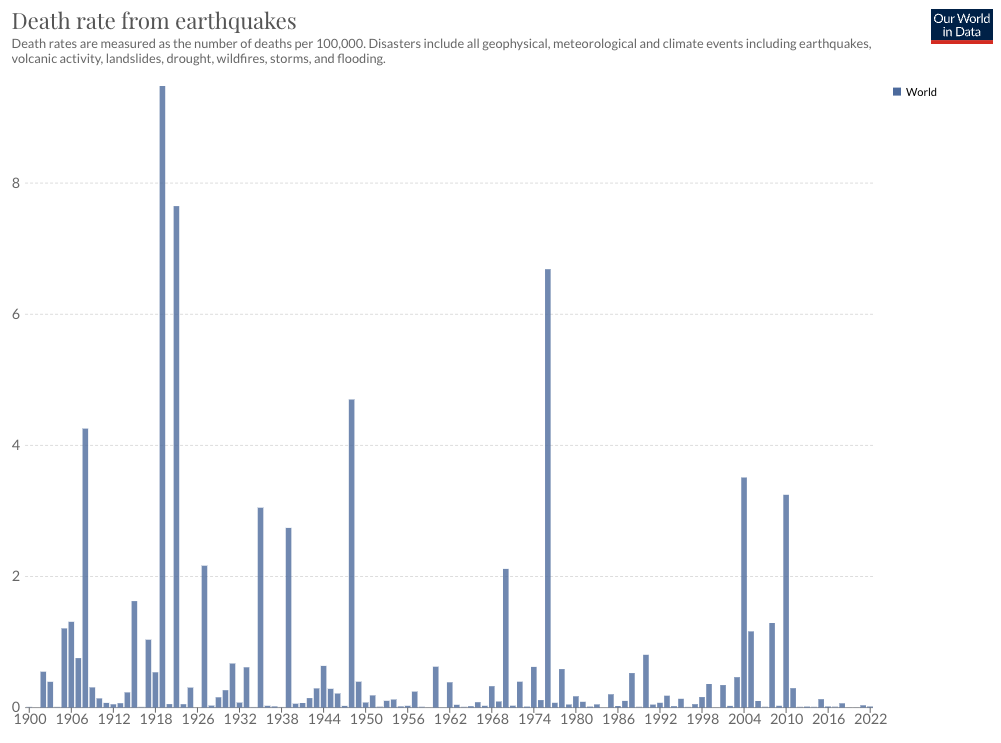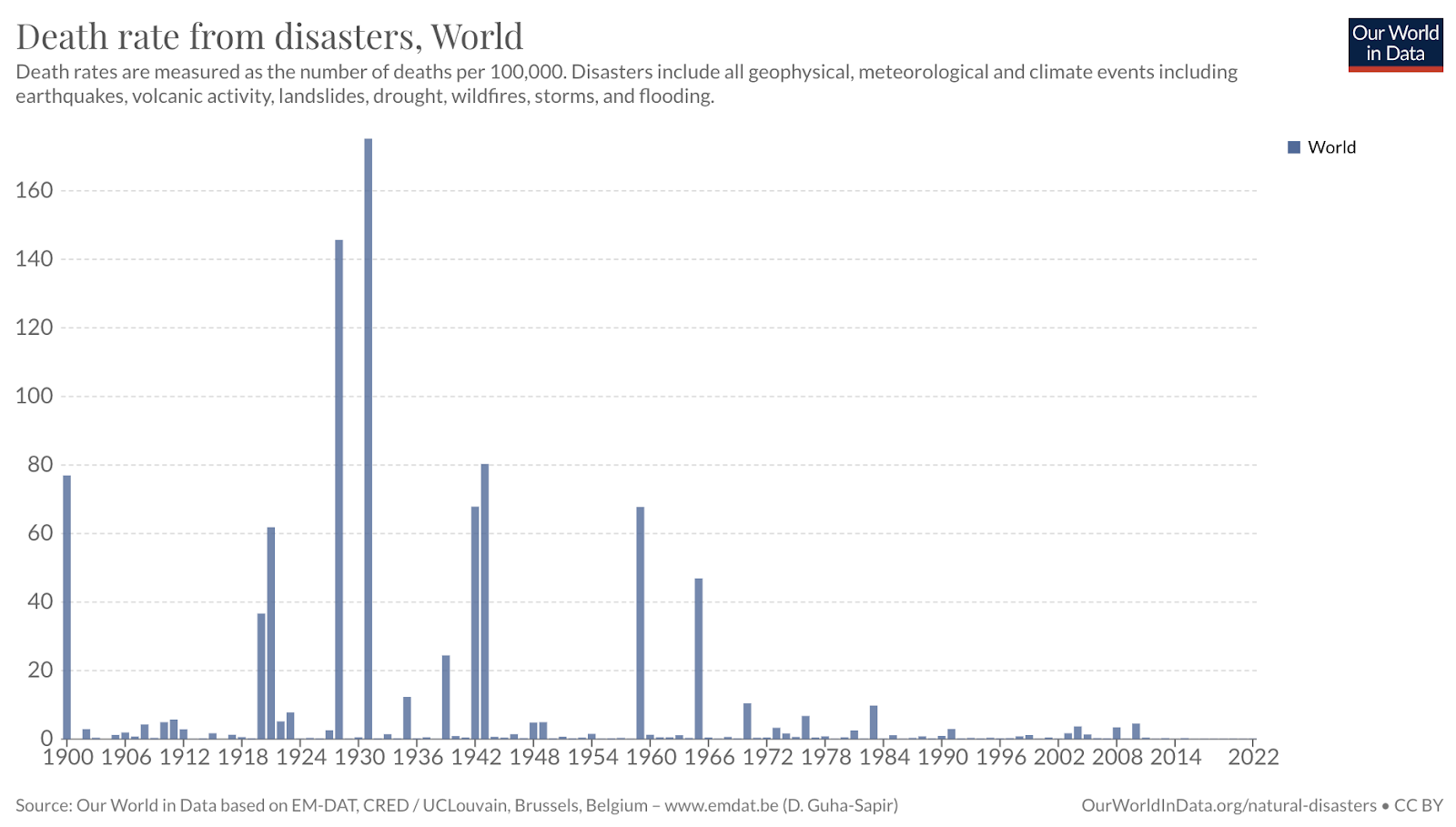Earthquakes, Resilience, and Humanity’s Terrible (and Permanent) Vulnerability
Natural hazards are everywhere. Our ability to deal with them hinges on economic and technological development.

-
-
Share
-
Share via Twitter -
Share via Facebook -
Share via Email
-
Last weekend, Turkey and Syria were struck by one of the largest earthquakes in the region’s history. The quake measured 7.8 on the Richter scale and was centered underneath the populous Turkish city of Gaziantep. It has left behind a horrifying estimated death toll of 19,000 (and counting), with many thousands more injured.
Unlike hurricanes, floods, wildfires, droughts, and heat waves, natural hazards like earthquakes have no significant connection to climate change. Unlike other disasters, too, they are not typically met by scientists rapidly producing attribution studies connecting the event to anthropogenic carbon emissions or admonitions by climate advocates to redouble efforts to reduce those emissions. They thus provide an opportunity to consider our vulnerability to natural hazards completely outside debates about the influence of climate change.
A hazard like an earthquake cannot become a disaster without meeting two conditions: there are people in the way of the hazard and those people are vulnerable to it. Because of economic and technological growth, humanity has become less vulnerable to earthquakes over time. When they occur today, they generate fewer deaths per capita than they did in the past.

However, overall declines in death rates from earthquakes are variable and uneven specifically because there is a lot of random chance involved in whether a large earthquake will happen to hit a particularly vulnerable society.
Consider, for example, the years 2010 and 2011. The spike in 2010 is dominated by the death toll of the devastating earthquake that struck Haiti that year, which measured 7.0 on the Richter scale and is estimated to have killed between 100,00 and 316,000. The much smaller death rate in 2011 includes the Tōhoku earthquake and subsequent tsunami, which was 100 times more powerful (9.0 on the Richter) and struck a region of Japan with a similar number of people. Yet the Tōhoku earthquake killed roughly a tenth as many people, with 90% of those deaths due to drowning (a factor not even at play in the Haiti earthquake).
The reason for the difference in outcome is clearly economic. The two societies differ in their wealth, which is associated with radically different levels of vulnerability to disasters. High-income countries tend to have stronger and more resilient infrastructure, better zoning and building codes, better preconceived evacuation plans, more sophisticated early warning systems, better-equipped first responders, and more capable healthcare systems. Simply put, economic and technological development are the main driving factors affecting our vulnerability.
And herein lie important lessons when the debate turns back to climate change. Consider this: If we look at death rates from all natural hazards, including those influenced by climate change, it would seem from the public conversation that the trendline would be up. However, death rates from all hazards show an even steadier and more precipitous decline than those from earthquakes alone.

This does not mean that climate change has no impact on the frequency, location, or intensity of hazards like floods, droughts, wildfires, and hurricanes. But it does mean that societal differences in vulnerability across time have completely overwhelmed changes in the hazards themselves due to climate change, effects that are relatively marginal. It also means that the focus on reducing greenhouse gas emissions as the primary, if not the only, way to reduce the impact of these hazards is dangerously misplaced.
One of us (Alex) recently called the framing of most disasters as ‘climate disasters’ the “white noise” of the modern climate information ecosystem. As he wrote, natural disasters have become opportunities for some figures in the scientific and advocacy communities to cast humanity in a recurring mortality play, with extreme weather described effectively as punishment for the sins of human behavior and consumption. Events like those in Turkey make abundantly clear that, whether climate related or not, natural hazards are not some punishment from God.
And they remind us of three more essential truths:
First, the primary motivation to be prepared for all natural hazards is that we live on a planet that is naturally hostile to our well-being, not because we are transforming a benevolent planet into a hostile one. After all, that is why we invented clothing, buildings, temperature control, and water management systems to protect us from the elements.
Second, modern wealth and the infrastructure and institutions that come with it have been, and will continue to be, the most important factors determining loss of life and other public health effects from natural hazards. That is why more than 95% of deaths from natural disasters occur in developing countries. It is that inequality that should be a prime lens for understanding and addressing natural hazards and disasters rather than an exclusive focus on emissions reductions.
And three, even in a fully decarbonized, universally wealthy, and techno-abundant future, humanity will always have some vulnerability. Not only will humanity always have to face hazards unrelated to climate change, but there also will never be a time when we can eliminate all hazards, and certainly not through climate policy. Therefore, it's important to stay mindful of our ever-present vulnerability and constantly search for ways to minimize it.

